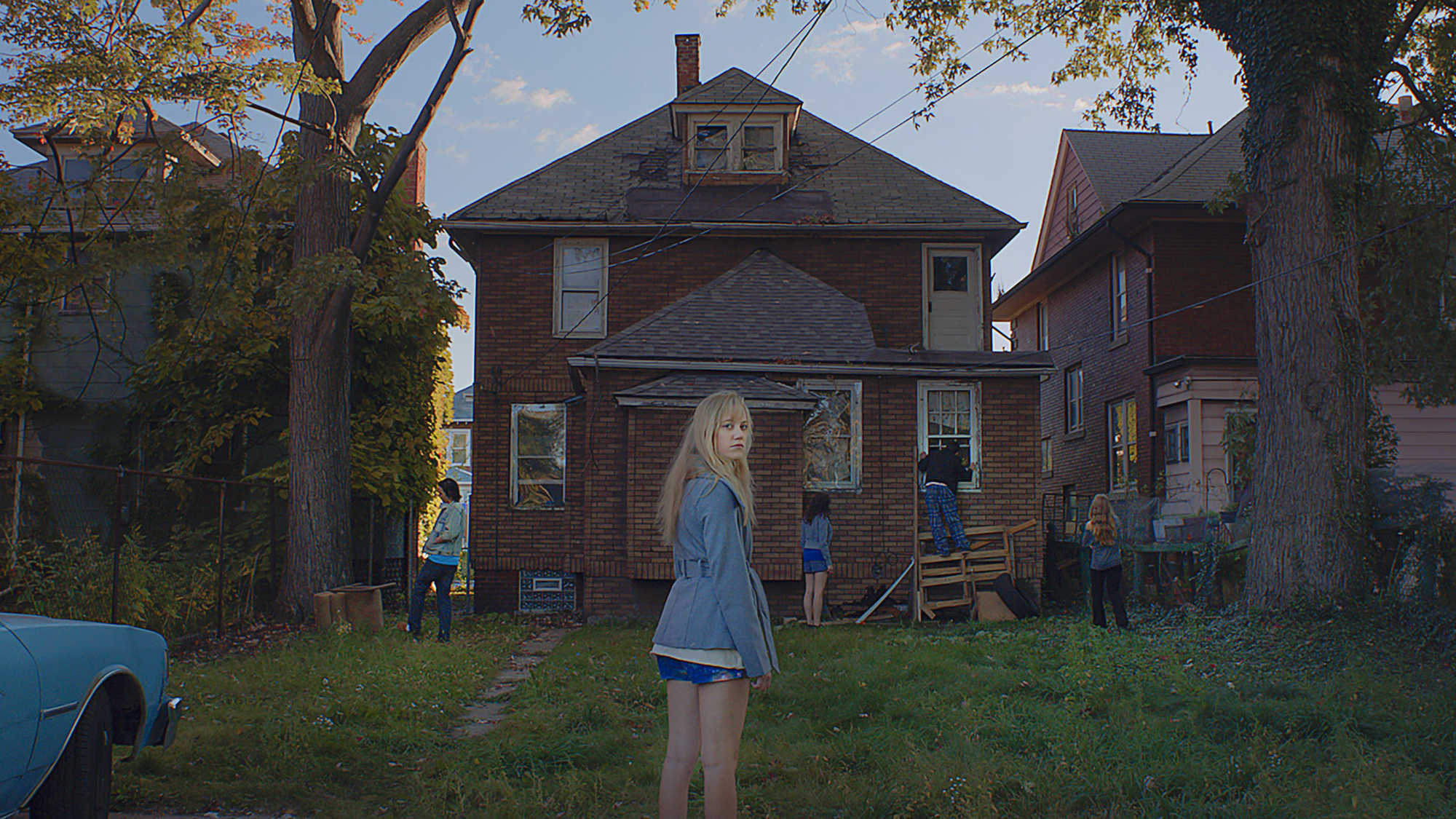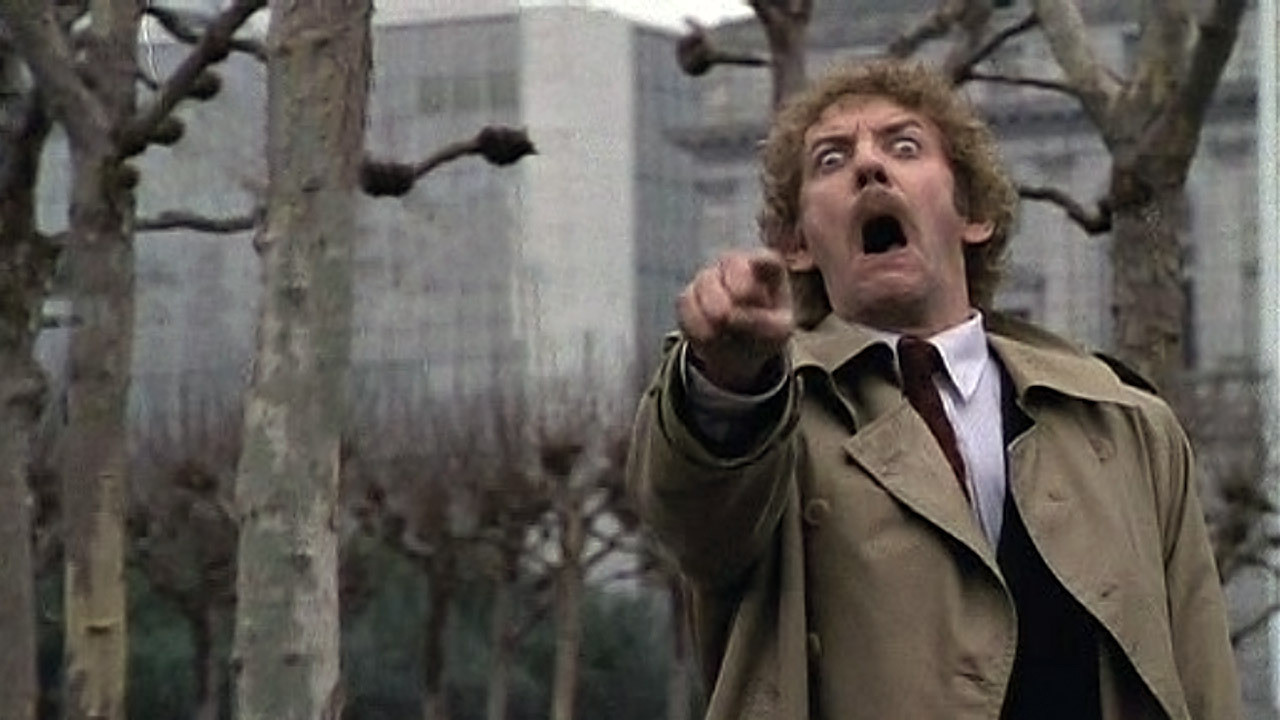A staple of the horror genre – the final girl. She’s been beaten, tied up, duct taped, stabbed and generally misused, but she soldiers on. Whether through virtue, savvy, or just general badassedness, these women are not above doing what’s necessary to make it through to the sequel – even if that means putting on Jason’s dead mother’s moth-eaten sweater, because that shit had to be gamey. So today our Senior Aussie/Slasher Correspondent Cory Metcalfe joins us again to celebrate the best final girls in horror.
6. Erin (Sharni Vinson – You’re Next, 2011)
Erin is Australian, which is clearly the deciding factor here. She joins her boyfriend for a family holiday in a gorgeous vacation home deep in the woods. Which sounds worse, the first meeting with the family or “deep in the woods”? In her case, that is seriously a toss-up. The gathering is disrupted by violent, mask-wearing psychopaths, but they weren’t prepared for Erin.
Erin’s one of the few at the event who’s new to the family, so she’s hard for the villains to predict. And we find that her boyfriend – a college prof who dates his students, including Erin – doesn’t know nearly enough about her. It’s a great tale of unreasonably low expectations. It’s also, a great character because Erin is savvy, tough, and fearless.
5. Mia (Jane Levy – Evil Dead, 2013)
With the helpful pen of Oscar winner Diablo Cody (uncredited), Fede Alvarez turns all the particulars of the Evil Dead franchise on end. You can tick off so many familiar characters, moments and bits of dialog, but you can’t predict what will happen.
One of the best revisions is the character of Mia: the first to go and yet the sole survivor. She’s the damaged one, and the female who’s there without a male counterpart, which means (by horror standards), she’s the one most likely to be a number in the body count, but because of what she has endured in her life she’s able to make seriously tough decisions to survive – like tearing off her own damn arm. Nice!
Plus, it rains blood! How awesome is that?!
4. Sarah (Shauna McDonald – The Descent, 2005)
Sarah is another one who appears to be the weak link but proves her meddle. She suffers an almost unendurable tragedy in the opening scene, and a year later, when she and her friends regroup to spend a holiday together spelunking in West Virginia, she appears to be the delicate one. What she goes through in the early part of the film informs her ability to survive – as her friend Beth points out (to her and to us) when Sarah gets caught in the narrow tunnel.
She’s quiet and observant, smart and proactive – all excellent qualities once we find out that the group is not only lost inside an unmapped underground cave with no hope of being found, but that the cave already has residents, and dude! Are they creepy!
The way Sarah evolves, and the turns the character and the film take, are surprising and impressive.
3. Sally Hardesty (Marilyn Burns – The Texas Chainsaw Massacre, 1974)
Back in 1974, the “final girl” formula hadn’t been perfected. The slasher genre barely even existed, but Tobe Hooper already knew how to play with genre expectations. Yes, Sally Hardesty is the sweet one, the pretty one, the one likeliest to be the last in line for that chainsaw, but there’s a lot more to her than halter tops and bell bottoms.
Marilyn Burns mines for something primal in this performance, which is absolutely necessary if we’re to believe this girl has what it takes to survive the cannibal family. Sally’s mania is recognizable, necessary to the viewer. No one is yelling advice or judgement at the screen because who in the hell could possibly know what to do in this situation?
Unlike so many female characters in horror before her and since, Sally doesn’t whimper and rely on the villain’s conscience to save her. She negotiates, and when she realizes that’s getting her nowhere, she makes tough choices (like throwing herself out a window – because no fate could be worse than the one that clearly awaits her otherwise). In keeping with the film, Burns’s performance is gritty, unpleasant, insane and perfect.
2. Laurie Strode (Jamie Lee Curtis – Halloween, 1978)
In 1978, Laurie Strode became the definition of “final girl” in much the same way that Carpenter’s horror masterpiece became the definition of slasher – the blueprint for the genre. For many, Jamie Lee Curtis’s girl-next-door is the ultimate final girl.
There’s great reason for that. She distilled everything that came before and became the model for what would come after in the slasher film: virtuous, smart, self-sacrificing. But Curtis does it with more intelligence and onscreen grace than those before or (mostly) after in the slasher genre. She’s virtuous, but not judgy. She’s hot, but not overtly so. She’s also brave and smart.
The reason the character transcended genre trappings to become iconic is not the writing or the film itself, but Curtis’s performance. An effortless intelligence shines through regardless of Laurie’s actions, and it elevates the film and the genre.
1. Ellen Ripley (Sigourney Weaver – Alien, 1979)
Who could possibly push Laurie Strode to second place? Ellen Ripley could.
Sigourney Weaver’s character in Alien and its many sequels is a savvy, tough, no-nonsense survivor. She is clearly the smartest member of the Nostromo crew: she understands chain of command and values quarantine regulations; she’s the first to recognize Ash (Ian Holm) as a villain; she understands the need to blow the ship; she outsmarts the predator.
Her sexuality is beside the point, which is entirely refreshing in this genre and for the role of final girl. She also changed the game for “final girls.” No longer could we accept a beautiful, sobbing mess who made ridiculous decisions, refused to fight back, and survived based entirely on her virtue. Ripley is never a victim, rarely makes an uninformed decision, and kicks all manner of ass. That’s why she survives. She’s not hoping to be saved, she’s just doing what it takes to get the F out of Dodge and keep Earth safe.
Thanks, Ellen!









